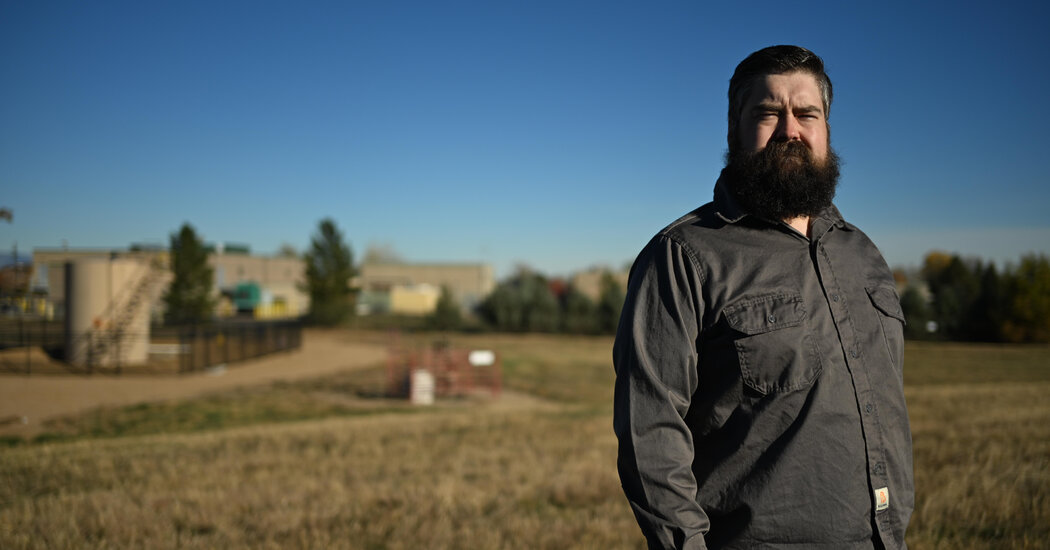Until recently, Forrest Smith was the sole employee at the National Park Service responsible for cleaning up dozens of abandoned oil and gas wells at national parks across the country.
But last month, the Park Service did not renew Mr. Smith’s four-year contract.
Now it is unclear whether anyone will clean up an estimated 93 abandoned wells on federal lands managed by the Park Service. The wells are at high risk of spewing planet-warming gases into the atmosphere and contaminating groundwater, posing significant threats to the environment and public health.
“There’s nobody left in the national parks who can confidently oversee this work with the expertise that I have,” Mr. Smith, 40, said in an interview. “I don’t think you could just pick somebody up and throw them in and expect them to do a really great job.”
Old oil wells dot federal lands across the country. Most were drilled before the national parks were established. In many cases, the companies that owned the wells went bankrupt and deserted the sites, which are often called “orphaned” wells.
Scientists have found that orphaned wells can release methane, a powerful greenhouse gas that contributes to climate change, as well as benzene, a chemical linked to leukemia and other blood cancers. Oil and brine can also seep from the wells into aquifers that supply drinking water to nearby communities, research shows.
Mr. Smith had held the job since 2019 and said he was surprised that the Trump administration did not retain him, since it has generally prioritized workers and programs focused on fossil fuels, even during the government shutdown. “You’d think that in this administration, the petroleum engineer would be pretty protected,” he said.
During the Biden administration, Mr. Smith was part of a four-person team that inspected and plugged abandoned wells with cement. The three other engineers left in recent months after accepting other jobs. The agency did not replace them, and it has not filled Mr. Smith’s role either, citing President Trump’s freeze on hiring civilian federal employees.
Elizabeth Peace, a spokeswoman for the Interior Department, which oversees the Park Service, said in an email that the agency does not comment on personnel. She said the Park Service “has made strong progress in meeting the administration’s priorities to identify and plug orphaned wells on park lands,” and that “staffing levels naturally fluctuate as appointments conclude and new positions are filled.”
Through the 2021 bipartisan infrastructure law, Congress approved $4.7 billion for states, tribes and federal agencies like the Park Service and the Forest Service to plug abandoned wells nationwide. “Now that there’s no one to mind the shop, I’m concerned that either these projects will stop happening or there will be no one watching to ensure that our taxpayer dollars are being spent properly,” said Adam Peltz, a lawyer with the Environmental Defense Fund, an advocacy group.
Mr. Smith estimated that there are around 2,500 inactive wells on Park Service lands, including 93 that are orphaned. Of those abandoned wells, about 70 are leaking methane, he said.
Methane, which is responsible for roughly a third of all planetary warming, is colorless and odorless. Backpackers recently discovered a leaky well in Ohio’s Cuyahoga Valley National Park because the methane plume was making a loud hissing noise they heard from a nearby trail.
Other leaky wells are spread across the scenic valleys and gorges of Big South Fork National River and Recreation Area in Tennessee and Kentucky. More are dotted across the bayou canals of Louisiana’s Jean Lafitte National Historical Park and Preserve.
Overall, there are more than 168,000 orphaned wells within 30 miles of a national park, according to an analysis by two advocacy groups, the National Parks Conservation Association and FracTracker Alliance. There are likely many more wells that have not yet been documented, experts say.
“I don’t think I can underscore enough that this has been a significantly underestimated public health and safety problem,” said Beau Kiklis, associate director of energy and landscape conservation at the National Parks Conservation Association.
Outside of national parks, states are still plugging orphaned wells using grants from the bipartisan infrastructure law. The Interior Department has continued to distribute these grants, even as the Trump administration has clawed back billions of dollars in other climate money. (In July, the agency said grant recipients no longer needed to study the effects of well cleanups on endangered species or historical artifacts.)
In Pennsylvania, where natural gas has long powered the economy, the state’s environmental protection office is working to plug 59 wells using federal funding, spokesman Neil Shader said in an email. The department has sealed an additional 315 wells since Gov. Josh Shapiro took office in 2023, he said.
At the Park Service, well-plugging expeditions are complicated affairs. Workers often lug heavy construction equipment across deserts, forests, mountains and other rough terrain. On site, they pump the well pipes with layers of cement, sealing them, according to Mr. Smith.
After leaving the Park Service last month, Mr. Smith scrambled to find a new job. His efforts paid off, and this month he started a new position as the director of engineering at TAQ Energy, a Denver-based oil and gas consulting firm.
There, he has continued to focus on plugging orphaned wells, this time partnering with states and private companies instead of the federal government.
Maxine Joselow covers climate change and the environment for The Times from Washington.
The post He Alone Tracked Leaky Oil Wells in National Parks. He Was Let Go. appeared first on New York Times.




